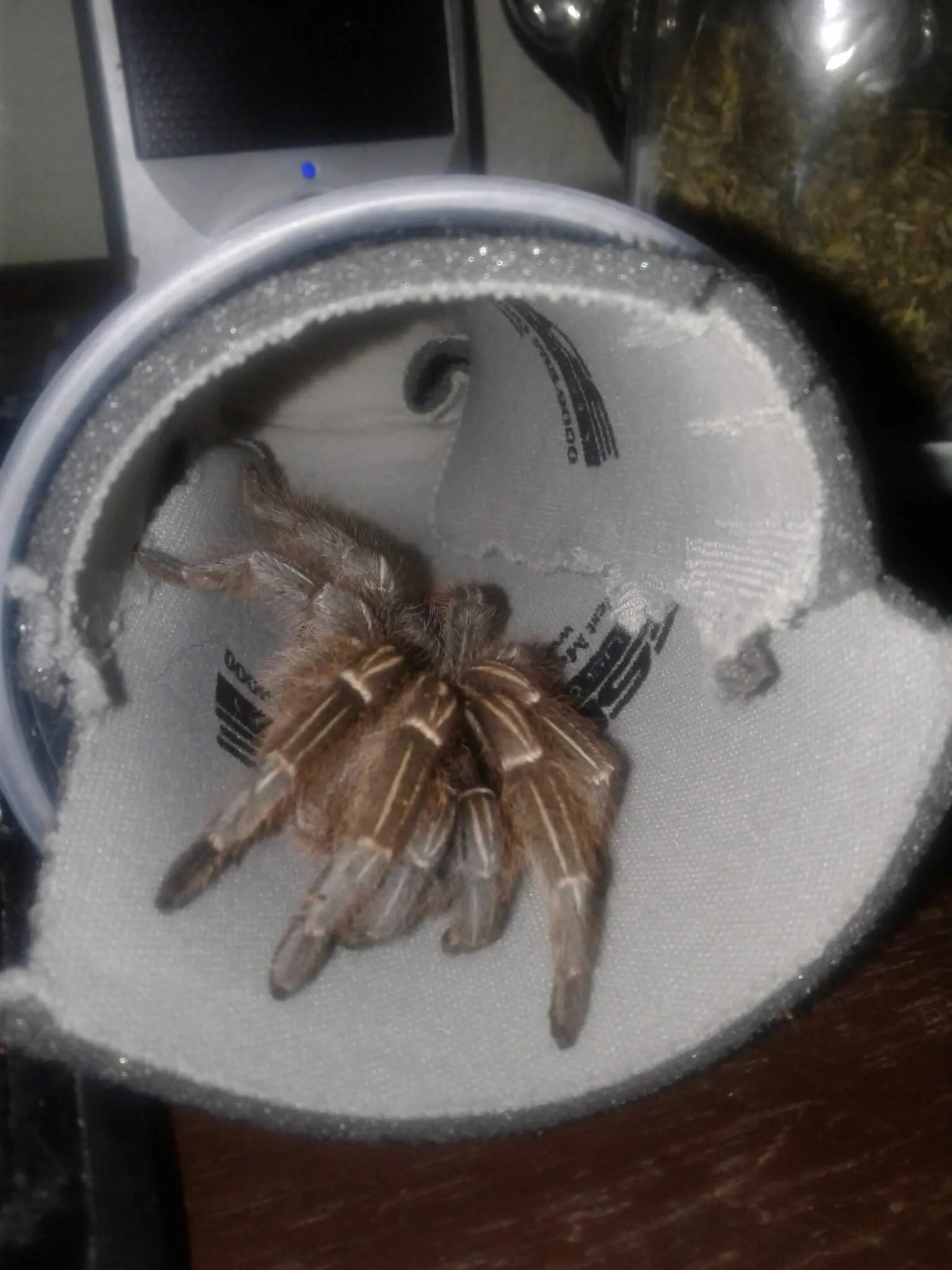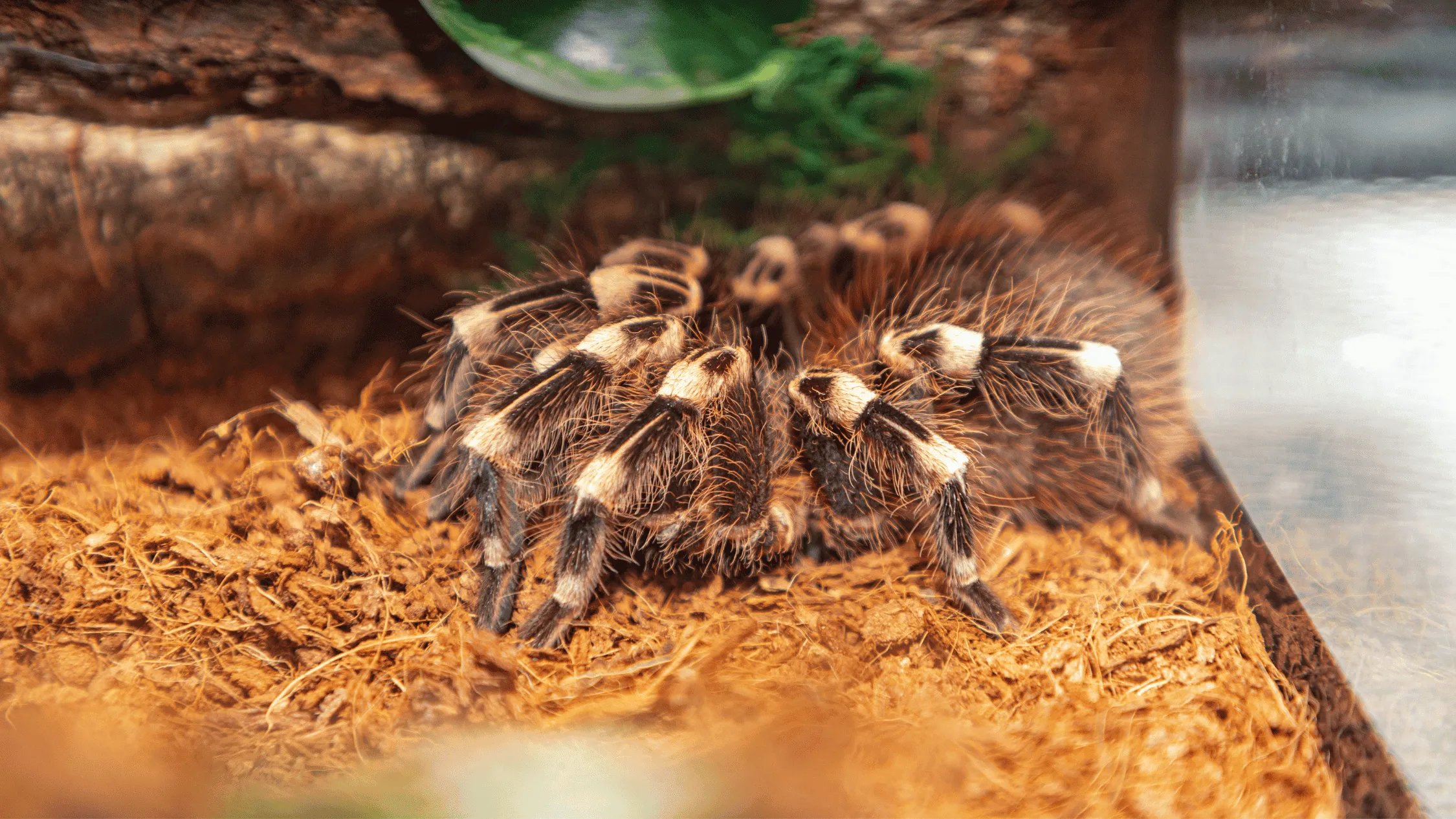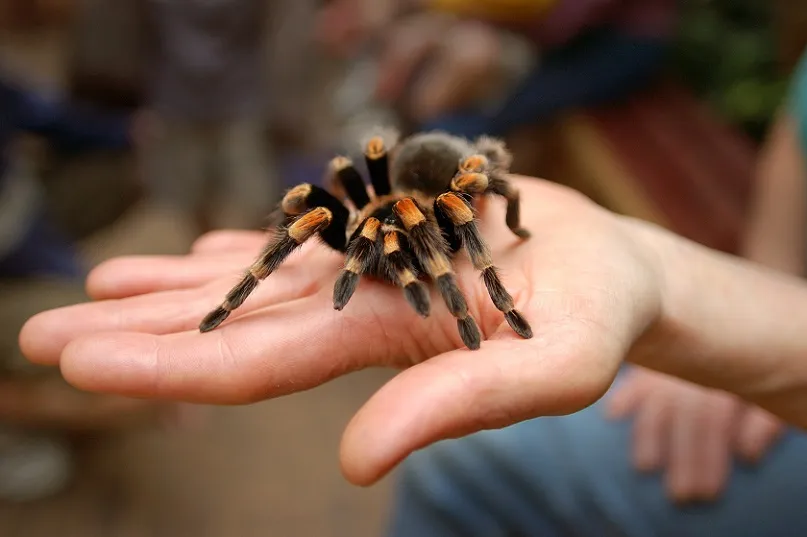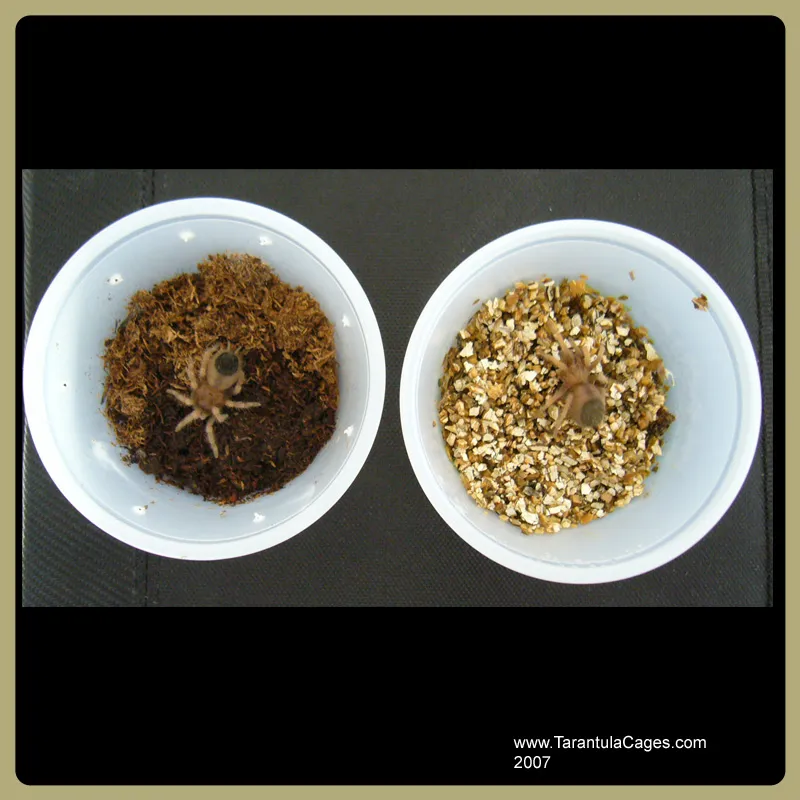Tarantula Care Guide Top 5 Tips
Bringing a tarantula into your home can be an incredibly rewarding experience. These fascinating creatures are relatively low-maintenance pets, but they still require specific care to thrive. This guide will provide you with the top 5 essential tips for keeping your tarantula happy and healthy. Understanding the basics of tarantula care is crucial for both the spider’s well-being and your enjoyment of having them as a pet. From setting up the perfect habitat to recognizing signs of illness, these tips will cover everything you need to know to become a successful tarantula owner. Taking care of a tarantula is a unique responsibility. It’s a chance to learn about these amazing creatures and appreciate their quiet beauty. With the right information and a little dedication, you can provide your tarantula with a long and fulfilling life.
Choosing Your Tarantula
Selecting the right tarantula species is the first step in ensuring a positive pet ownership experience. Not all tarantulas are created equal; some species are better suited for beginners than others. Consider factors like temperament, size, and care requirements. For example, the Chilean Rose Hair tarantula is known for its docile nature and is often recommended for novice keepers. Other species, like the Greenbottle Blue tarantula, may have more specific needs and a slightly more defensive disposition. Research different species thoroughly before making a decision. This will help you choose a tarantula that matches your experience level and lifestyle. Remember that tarantulas can live for many years, so choosing the right one initially is an important decision for both you and your pet.
Researching Tarantula Species

Before bringing a tarantula home, dedicate time to in-depth research on the specific species you are considering. This involves learning about its natural habitat, dietary needs, and potential health issues. Understanding the tarantula’s origin can help you replicate its environment in captivity. For example, a terrestrial species from a dry environment will require a different setup compared to an arboreal species from a humid rainforest. The more information you gather, the better equipped you will be to provide optimal care. Reliable sources of information include scientific journals, reputable pet websites, and experienced tarantula keepers. Look for details on the tarantula’s behavior, such as its temperament and burrowing habits, as these factors influence habitat design. Thorough research is an investment in your tarantula’s well-being and your own peace of mind.
Setting Up the Ideal Tarantula Habitat
Creating the right environment is crucial for your tarantula’s health and happiness. The enclosure should be appropriately sized for the species, allowing ample space for movement and exploration. Glass or acrylic terrariums are popular choices, offering good visibility and ease of cleaning. Ventilation is essential to prevent the buildup of harmful gases and maintain appropriate humidity levels. The enclosure should also provide a secure and escape-proof environment. Tarantulas are surprisingly adept at finding their way out of enclosures. Ensure the lid is tight-fitting and that there are no gaps. In addition, the setup should mimic the tarantula’s natural habitat as closely as possible. This involves choosing the correct substrate, adding decorations like hides, and controlling the temperature and humidity.
Substrate Selection
The substrate is the foundation of your tarantula’s habitat, providing a comfortable surface for burrowing and maintaining the necessary humidity levels. The choice of substrate depends on the tarantula species; for example, burrowing species need a deeper layer of substrate than arboreal species. Coconut fiber, peat moss, and a mix of both are popular choices due to their ability to retain moisture and provide a naturalistic environment. Avoid substrates that are toxic or contain harmful chemicals. The substrate should be changed regularly to prevent the growth of mold and bacteria. Monitoring the humidity levels and adjusting the substrate as needed is an important part of tarantula care. Proper substrate management directly impacts your tarantula’s health and overall well-being, creating an ideal setting that replicates their natural home.
Temperature and Humidity Control

Maintaining the correct temperature and humidity levels is vital for your tarantula’s health. Different species have specific requirements, so researching the needs of your particular tarantula is essential. Use a thermometer and hygrometer to monitor the conditions inside the enclosure. Heating pads or lamps can be used to maintain the appropriate temperature, but make sure to regulate them carefully to avoid overheating. Humidity levels can be adjusted by misting the enclosure or adding a water dish. Avoid placing the enclosure in direct sunlight or near heat sources, which can cause rapid fluctuations in temperature. Consistent monitoring and adjustments based on your tarantula’s needs is essential to providing a stable and healthy environment. Proper temperature and humidity are critical for molting and overall health, so pay close attention to these factors.
Providing Food and Water for Your Tarantula
Feeding your tarantula appropriately is vital for its survival and well-being. Most tarantulas are insectivores, meaning they primarily eat insects. Crickets, mealworms, and roaches are common food items that are readily available. The size of the food should be appropriate for the tarantula’s size, as it needs to be able to catch and subdue its prey. Always offer fresh, clean water in a shallow dish. Overfilling the water dish could increase the humidity too high and possibly lead to health complications. Remove uneaten food items to prevent the buildup of bacteria. The frequency of feeding depends on the tarantula’s age and species, with younger tarantulas often needing to be fed more frequently. Provide a varied diet for optimal health, and ensure that the food is free of pesticides or other harmful substances. Feeding your tarantula is more than just providing nutrition; it’s about ensuring the overall well-being and healthy development of the spider.
Feeding Frequency and Diet
The feeding frequency for a tarantula varies greatly depending on its age and the species. Spiderlings, or young tarantulas, typically need to be fed more frequently, often two to three times a week. Adult tarantulas, on the other hand, may only require feeding once a week or even less. Overfeeding can lead to health issues, so it’s essential to monitor your tarantula’s abdomen size; a well-fed tarantula will have a plump abdomen. Provide a varied diet of appropriately sized insects, such as crickets, roaches, or mealworms. You can also supplement the diet with occasional treats, such as small pieces of fruit for some species. Always ensure that the insects are gut-loaded before feeding them to your tarantula, which means they are fed nutritious food so that the spider benefits from any nutrients consumed. Proper feeding habits contribute significantly to the tarantula’s health, growth, and overall longevity.
Watering Your Tarantula

Providing access to fresh water is critical for your tarantula’s hydration. Use a shallow water dish that is easily accessible and won’t pose a drowning hazard. The water dish should be cleaned regularly to prevent the buildup of bacteria and algae. The frequency of watering depends on the species and environmental conditions. Some tarantulas also obtain moisture from their food and from the humidity of their enclosure. Monitor the substrate to ensure it’s not too dry. For some species, misting the enclosure lightly can help to increase humidity. Make sure the water is always clean and readily available. Clean water is essential for a tarantula’s health and well-being, supporting processes like molting and maintaining the overall health.
Maintaining Tarantula Health
Maintaining the health of your tarantula involves a holistic approach, including proper nutrition, environmental conditions, and regular observation. Observe your tarantula daily for any signs of illness or distress. These can include a loss of appetite, lethargy, unusual posture, or changes in appearance. It’s also crucial to provide a clean and safe environment, preventing the buildup of bacteria and parasites. Quarantine new tarantulas to prevent the spread of diseases. Regular health checks and prompt responses to any concerning symptoms are vital. Ensure proper ventilation and humidity to prevent the growth of mold. Being proactive and observant will give you the best chance of catching health issues early and ensuring your tarantula lives a long and healthy life. Regular maintenance directly contributes to your tarantula’s quality of life.
Identifying Common Tarantula Health Issues
Knowing how to identify common health issues can make a big difference in your tarantula’s well-being. Watch for signs of illness, such as a lack of appetite, lethargy, or changes in behavior. Respiratory issues can be indicated by labored breathing or a dry abdomen. Parasites, like mites, can be visible as small, moving dots on the tarantula’s body. Fungal infections can also occur, often due to high humidity or poor ventilation. If you notice any of these signs, it’s important to seek advice from a veterinarian who specializes in exotic animals. Early detection and prompt treatment are key to a successful recovery. Educate yourself on the specific health concerns associated with your tarantula species. Being vigilant and knowing what to look for is crucial for catching and addressing issues quickly.
Handling Your Tarantula Safely

Handling a tarantula should be done with caution and understanding. Some tarantulas are more docile than others, while some are more prone to biting or flicking urticating hairs, which can cause irritation. Always approach the tarantula slowly and gently, and never handle it if it seems agitated or defensive. Always wash your hands before and after handling your tarantula, and avoid wearing scented lotions or perfumes that could agitate the spider. Handle the tarantula close to the ground or a soft surface, in case it falls. If you’re bitten, seek medical attention, although tarantula bites are rarely life-threatening. Understand the species and the specific temperament of your tarantula before handling it. The safest approach is to minimize handling and observe your tarantula from a safe distance. Safety first is the most important rule.
The Importance of Regular Tank Maintenance
Regular tank maintenance is fundamental to providing a healthy environment for your tarantula and preventing disease. This includes regular cleaning of the enclosure, removal of uneaten food, and replacement of the substrate. The frequency of cleaning depends on the species and the size of the enclosure. For example, a smaller enclosure may need more frequent cleaning than a larger one. Remove any uneaten food promptly to prevent the growth of mold and bacteria. Regularly inspect the enclosure for any signs of mold, pests, or other issues. Keep a schedule and stick to it to maintain optimal conditions. Tank maintenance is crucial for your tarantula’s health and contributes significantly to its well-being. A clean environment will minimize health risks and make your pet happy.
Cleaning the Enclosure
Cleaning the enclosure should be done regularly. This involves removing any waste, such as shed exoskeletons and leftover food items. The substrate should be spot-cleaned weekly and fully replaced every few months. Use a mild, unscented cleaner to wipe down the enclosure walls and decorations. Ensure that all cleaning products are completely rinsed away and that the enclosure is fully dry before returning your tarantula to its habitat. Provide a clean and healthy environment to prevent diseases and parasites. Proper cleaning is a crucial part of responsible tarantula ownership. Avoid cleaning products that are toxic to prevent health complications.
How to Handle a Molting Tarantula

Molting is a natural process where tarantulas shed their exoskeletons to grow. During this time, your tarantula will be very vulnerable. Do not disturb your tarantula during molting. It may appear lethargic and not eat for some time before the molt. The tarantula usually flips onto its back during the molting process. Provide a humid environment to help the process. Once the molt is complete, wait a few days before offering food to allow the new exoskeleton to harden fully. Avoid handling the tarantula during and immediately after the molt. Provide a safe and stress-free environment. Understanding the molting process will allow you to provide the best care for your tarantula during a vulnerable time. Proper care during molting is critical for the tarantula’s survival and well-being.
